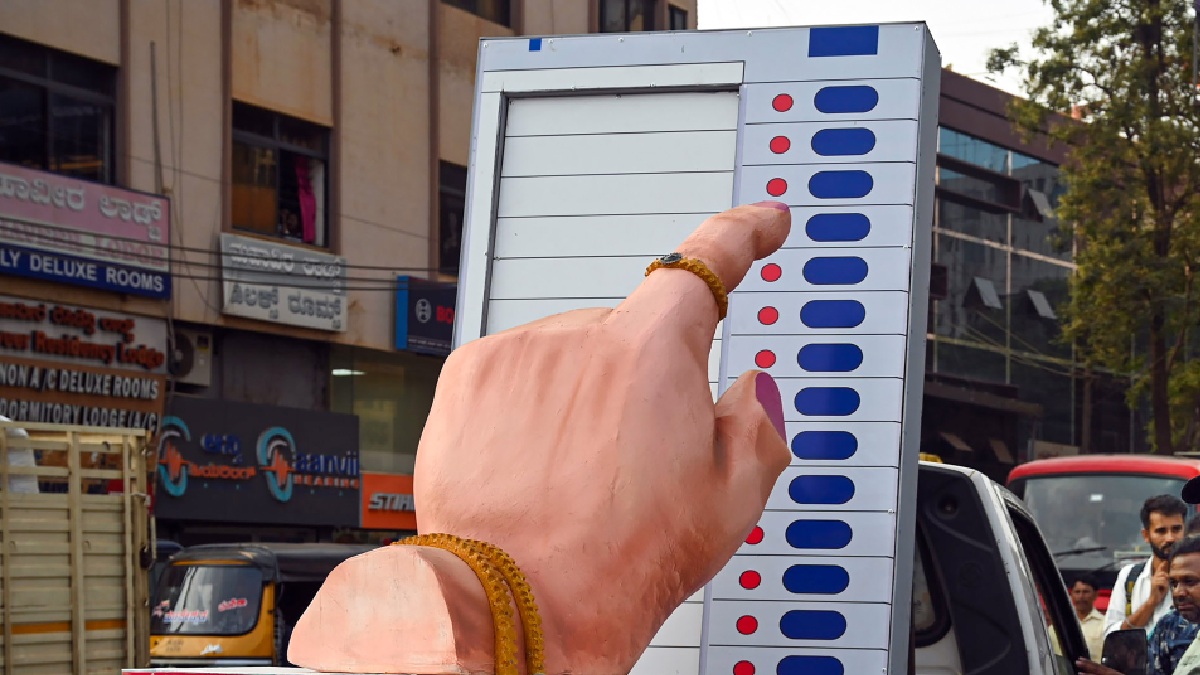
India: What's being done to clean up Dehli's toxic air?
New Delhi, Nov 24: Winter usually brings higher levels of air pollution to India's capital region and surrounding areas — leaving the people who live there to cope with the health impacts.
This year, pollution levels reached the "hazardous" category, forcing authorities to shut down schools.

The spike in air toxins has been attributed to a farming method known as stubble burning in neighboring Punjab and Haryana states, with exhaust fumes from Delhi cars and factories contributing to about 32.9% of the area's pollution.
Indian Environment Minister Bhupender Yadav has accused Punjab state of causing Delhi's smog crisis. Punjab is governed by the Aam Aadmi Party, which is in opposition to Prime Minister Narendra Modi's Bharatiya Janata Party (BJP).
Delhi Chief Minister Arvind Kejriwal said "finger-pointing" over the smog is not a solution to the air-quality crisis.
What is is health impact of Delhi's smog?
Meanwhile, many locals have complain of headaches, runny noses and irritation in their eyes, while others — especially children — complain of symptoms leading to vomiting.
Pollution caused 2.3 million premature deaths in India in 2019, according to a study in the Lancet medical journal. Health experts recently equated breathing New Delhi's air to smoking up to 30 cigarettes a day.
"We need policies and laws in place that prioritize the health of citizens," New Delhi-based environmentalist Bhavreen Kandhari told DW.
She's co-founder of a group called Warrior Moms advocating for future generations to have clean air.
"It's the sources of pollution that need urgent action and not the symptoms of pollution," Kandhari added. "Installing smog towers while at the same time cutting down trees is not the way to achieve clean air."
Looking for long-term solutions
While the air quality worsens in the winter, many experts have pointed out that the problem is actually a year-round one. In their efforts to mitigate air pollution, local and central governments have announced a slew of measures over the years.
Temporary solutions have been deployed, such as asking office employees to work from home in order to reduce vehicular pollution, using anti-smog gun sprays, and shutting down construction sites.
"The need is for innovative thinking so that the solutions that are created are more holistic, long-term, and sustainable," Prarthana Borah, director of CDP India, an environmental non-profit, told DW.
"Control of ambient particulate matter pollution requires action in several sectors and the linkage of these actions for greatest impact," Borah added.
Using 'airshed management'
Since air pollution transcends boundaries, India is looking to adopt a concept known as "airshed management" as an approach to curb the toxins.
This method traps the toxins present in a common geographical area — a concept that has generated some success in the US and Canada.
Across South Asia, areas with critically high levels of fine particulate matter (PM2.5) — such as the Indo-Gangetic plain, middle India and the Brahmaputra basin could benefit from airshed management.
The size of PM2.5 pollutants enables them to travel deep into the respiratory tract, exacerbating the risk of asthma, bronchitis and other lung diseases.
The Indian government is currently looking into how they could adapt airshed management.
"Governments must meet the climate and clean air levels by adopting WHO Guidelines for healthy air," said Kandhari.
"By doing this we will save millions of lives, trillions of dollars — and build a brighter future for generations to come. The private sector must also be held accountable for their contribution to air quality."
While government negotiations with farmers about reducing stubble burning have failed, alternative small-scale solutions have been implemented successfully.
Government officer Vikram Yadav reduced burning in the district of Ambala, Haryana, by implementing alternative strategies to remove or reuse wheat and rice paddy.
In November, the Office of the Principal Scientific Advisor to the Government of India, along with a team from the Indian Institute of Technology Delhi (IIT-Delhi), started working with tech startups and industry partners to launch at least ten science- and tech-driven solutions to fight air pollution in New Delhi.
This project — which will run till February 2023 — includes creating awareness and community engagement, science and technology interventions, and industry meetings.
Source: DW


 Click it and Unblock the Notifications
Click it and Unblock the Notifications
































